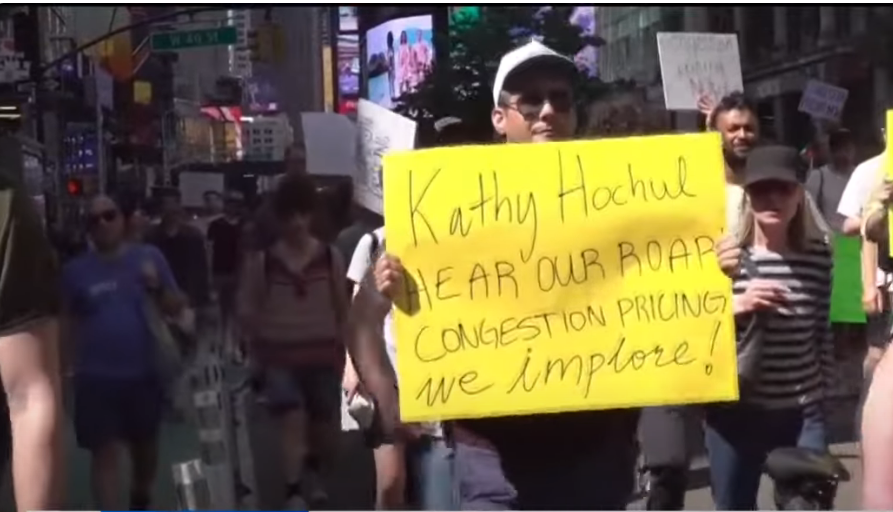In what seems to be a stunning reversal of public sentiment, Manhattan witnessed a significant protest march advocating for the implementation of congestion pricing on the eve of what would have been the start of the program.
This initiative, which aims to reduce traffic congestion and pollution by charging a fee to vehicles entering the busiest parts of the city, has been a topic of heated debate. Supporters argue that congestion pricing is essential for modernizing the city’s transportation infrastructure, funding public transit improvements, and making the city more accessible for all, including those with disabilities.
But after the widespread and bitter objections by its opponents, Governor Kathy Hochul had put the plan on an “indefinite pause”, fearing no doubt that she would suffer political fallout as she comes up for election.
The march in Manhattan underscores the public’s concern over the indefinite postponement of the program, which was expected to generate substantial revenue for the Metropolitan Transportation Authority (MTA). The funds were earmarked for critical projects, such as modernizing signals and making subway stations more accessible.
The shift in public sentiment towards congestion pricing in Manhattan can be attributed to a deeper understanding of its long-term benefits, particularly in the wake of the proposed cuts to the city’s transit budget. Initially, the idea of charging a fee to enter the busiest parts of Manhattan was met with strong resistance, primarily due to concerns over the financial burden on drivers.
However, as the Metropolitan Transportation Authority faced a significant budget shortfall, the urgency to find sustainable funding sources for public transit improvements became apparent. Advocates for congestion pricing highlighted that the revenue generated could modernize public transportation, reduce traffic congestion, and lower pollution levels, which resonated with many New Yorkers.
The protesters’ march underscored the necessity of congestion pricing as a means to ensure the reliability and accessibility of the city’s transit system, reflecting a broader recognition of the interconnectedness of transportation policy, environmental health, and social equity.
According to Hochul, hers was not a permanent cancelation of the projected plan, but only a pause, although an indefinite one.
Hochul has pledged to find funding to replace the $15 billion that the MTA can no longer count on from congestion pricing. But in the meantime, the MTA has slashed projects from its capital plan due to the budget gap caused by Hochul’s pause.
“There is no reason for New Yorkers to be concerned that any planned projects will not be delivered.” It remains to be seen if the public reaction, now in support of congestion pricing, will lead to a further change of mind for the governor.












